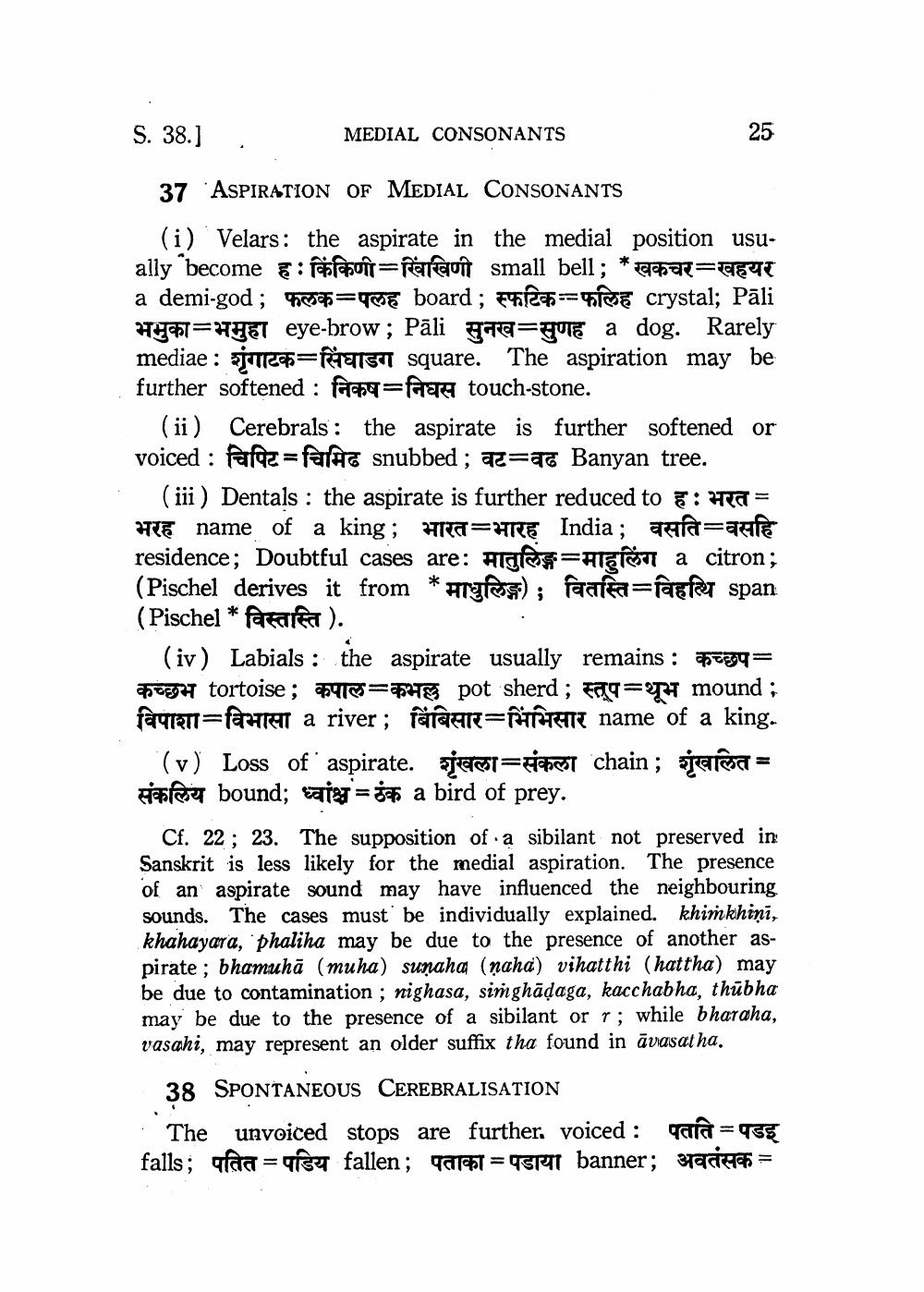________________
S. 38.]
.
MEDIAL CONSONANTS
25
37 'ASPIRATION OF MEDIAL CONSONANTS (i) Velars : the aspirate in the medial position usu. ally become ह: किंकिणी-खिखिणी small bell; *खकचर-खहयर a demi-god ; फलकपलह board ; स्फटिकम्-फलिह crystal; Pali भभुका=भमुहा eye-brow; Pali सुनख-सुणह a dog. Rarely
mediae : शृंगाटक-सिंघाडग square. The aspiration may be further softened : निकष-निघस touch-stone.
(ii) Cerebrals: the aspirate is further softened or voiced : चिपिट = चिमिढ snubbed ; वट=वढ Banyan tree.
(iii) Dentals : the aspirate is further reduced to T: HAT = भरह name of a king; भारत-भारह India; वसति=वसहि residence; Doubtful cases are: मातुलिङ्ग-माहुलिंग a citron; (Pischel derives it from * माधुलिङ्ग); वितस्ति=विहत्थि span (Pischel* विस्तस्ति ).
(iv) Labials : the aspirate usually remains : कच्छप= कच्छभ tortoise ; कपाल-कभल्ल pot sherd ; स्तूप-थूभ mound; विपाशा=विभासा a river ; बिंबिसार=भिंभिसार name of a king.
(v) Loss of aspirate. शृंखला=संकला chain; शृंखलित = संकलिय bound; ध्वांश ठंक a bird of prey.
Cf. 22; 23. The supposition of a sibilant not preserved in Sanskrit is less likely for the medial aspiration. The presence of an aspirate sound may have influenced the neighbouring sounds. The cases must be individually explained. khimkhiņi, khahayara, 'phaliha may be due to the presence of another aspirate; bhamuhā (muha) sunaha (naha) vihatthi (hattha) may be due to contamination ; nighasa, simghādaga, kacchabha, thūbha may be due to the presence of a sibilant or r; while bharaha, vasahi, may represent an older suffix tha found in āvasatha.
38 SPONTANEOUS CEREBRALISATION • The unvoiced stops are further. voiced : पतति पडइ falls; पतित = पडिय fallen; पताका = पडाया banner; अवतंसक =




